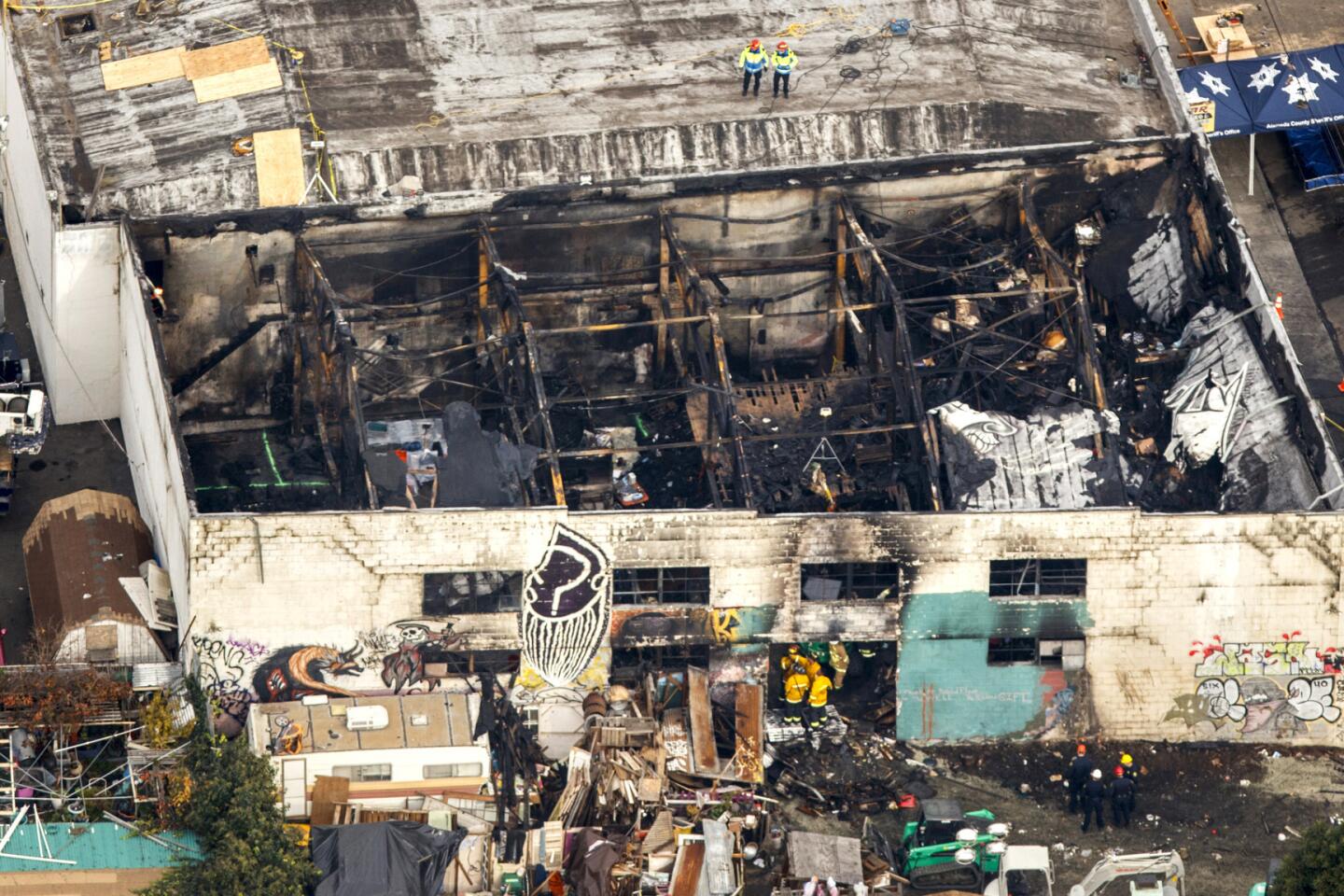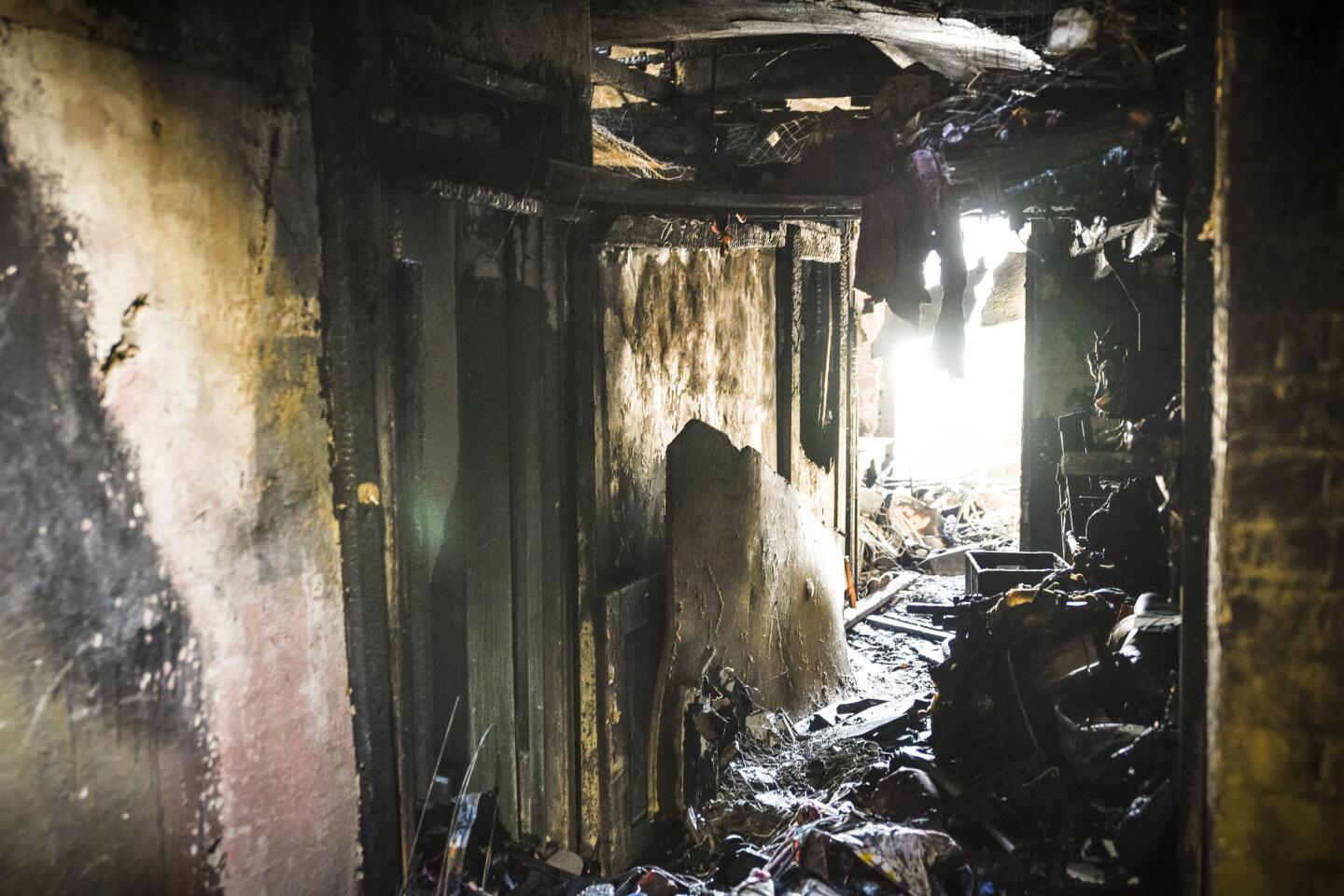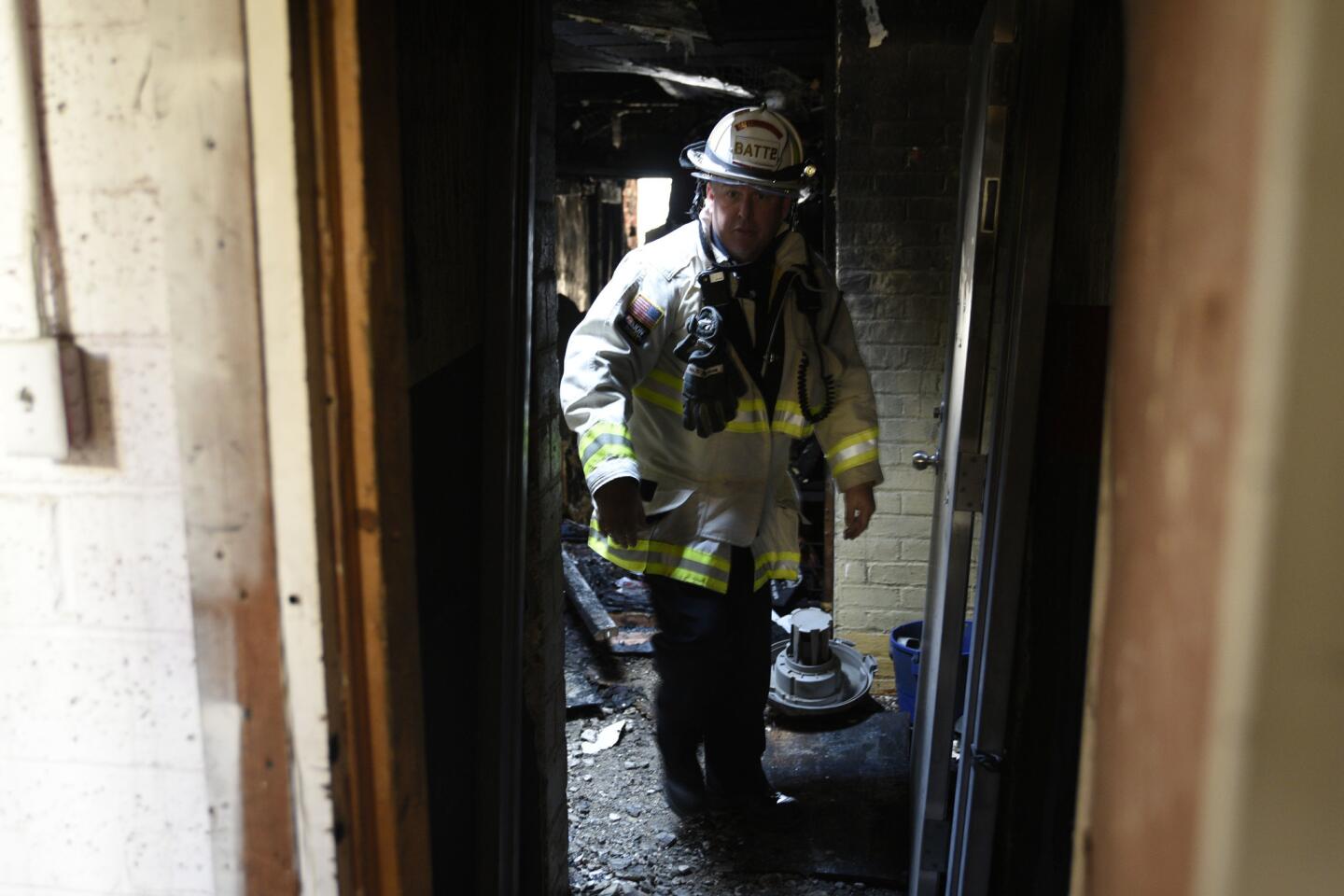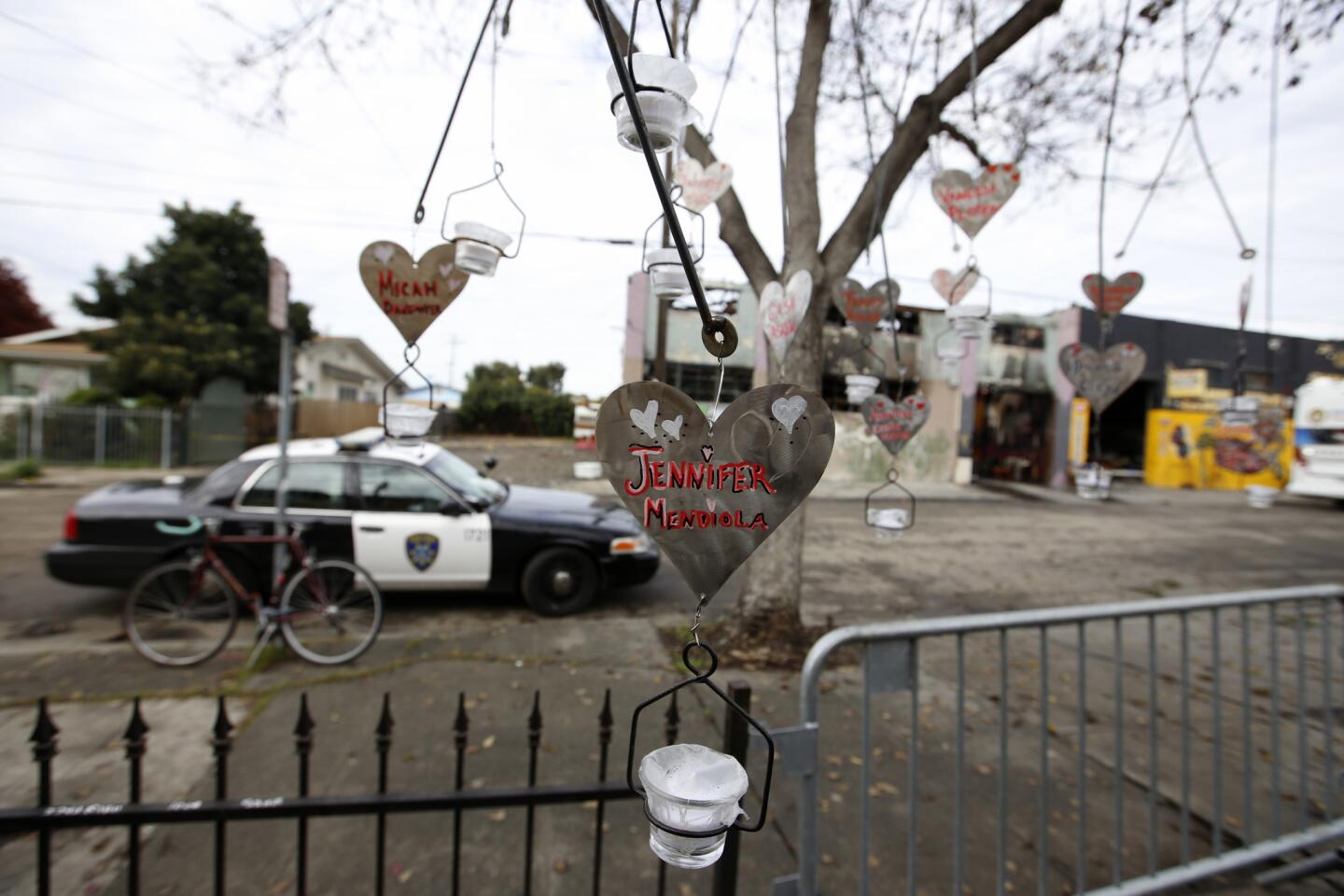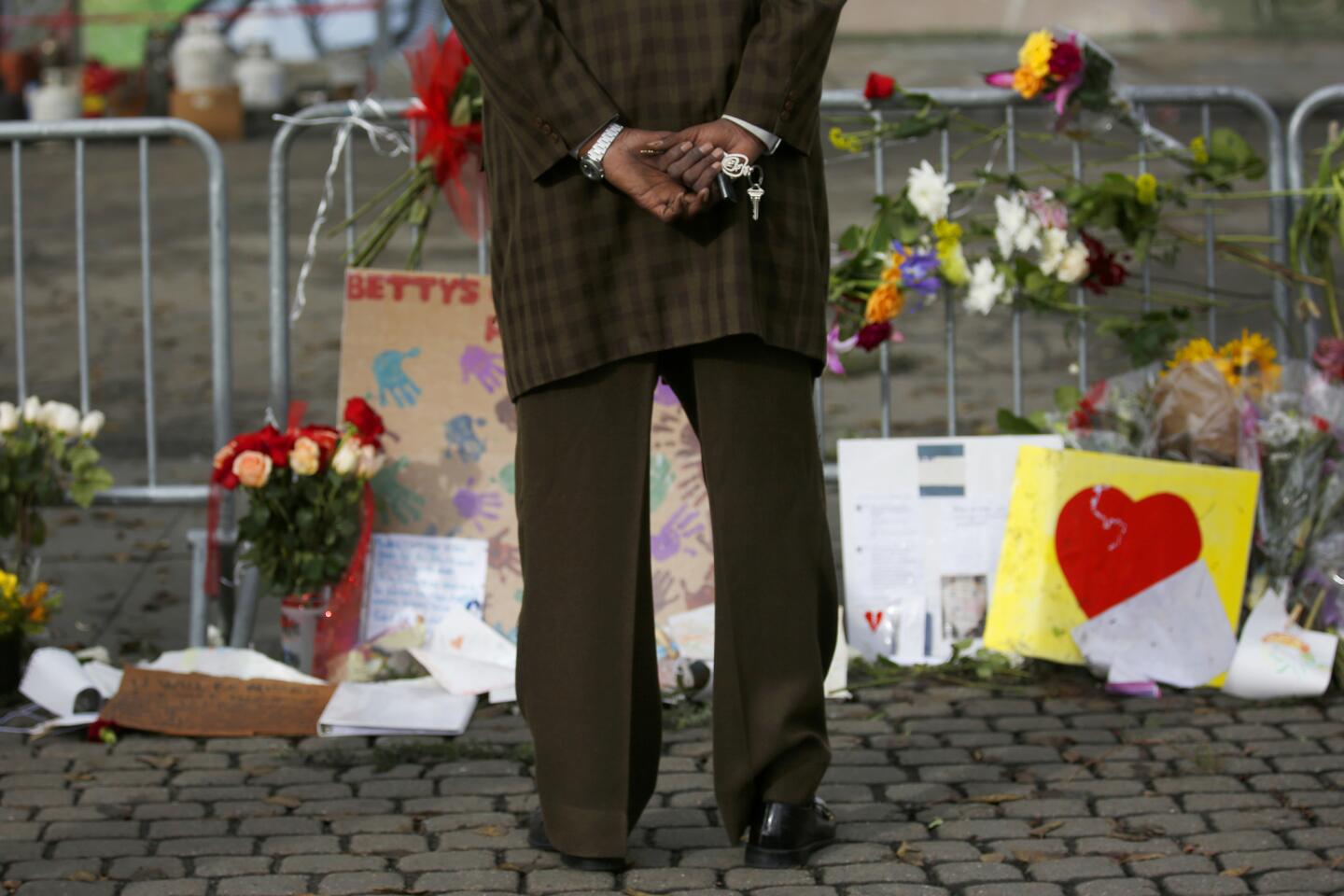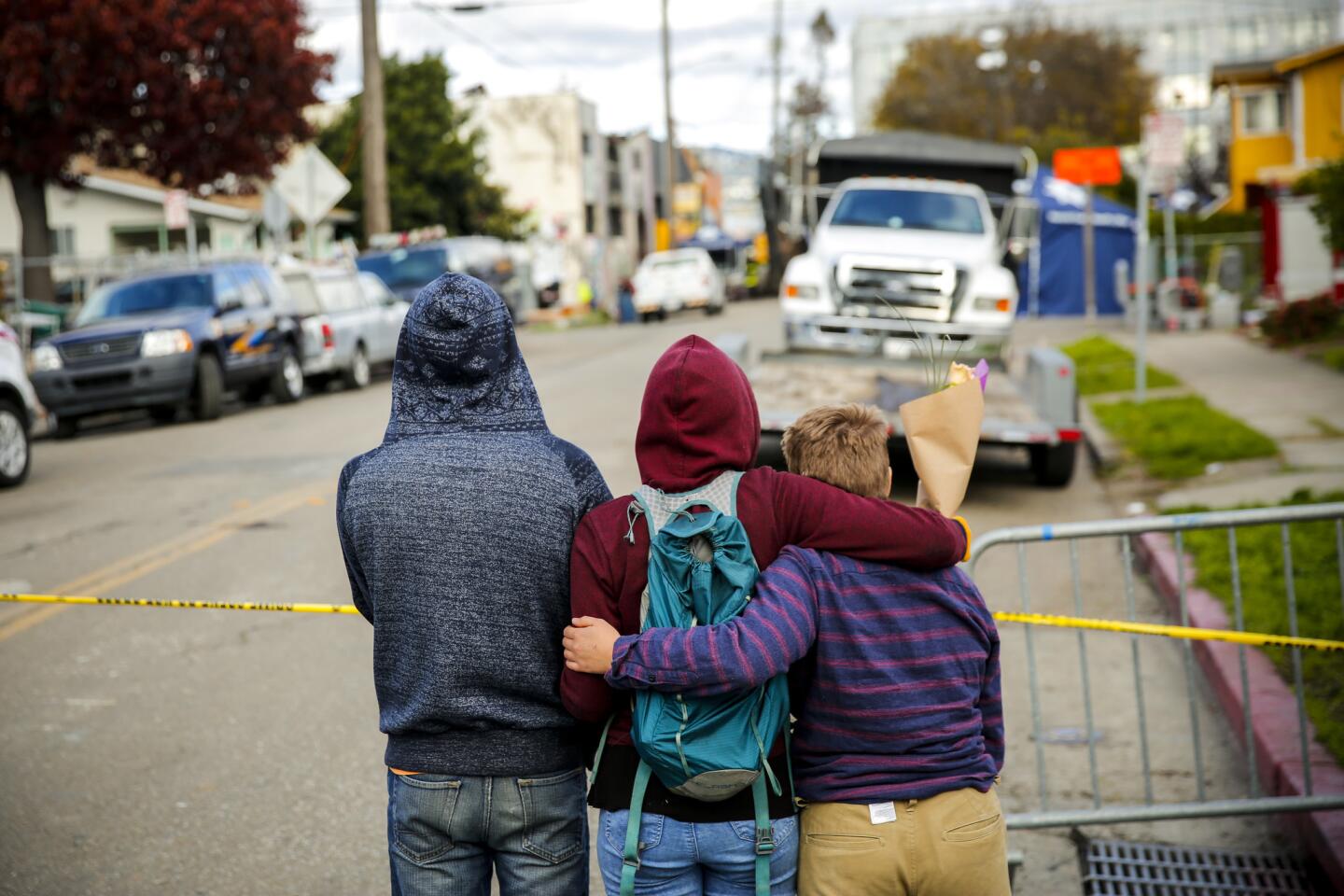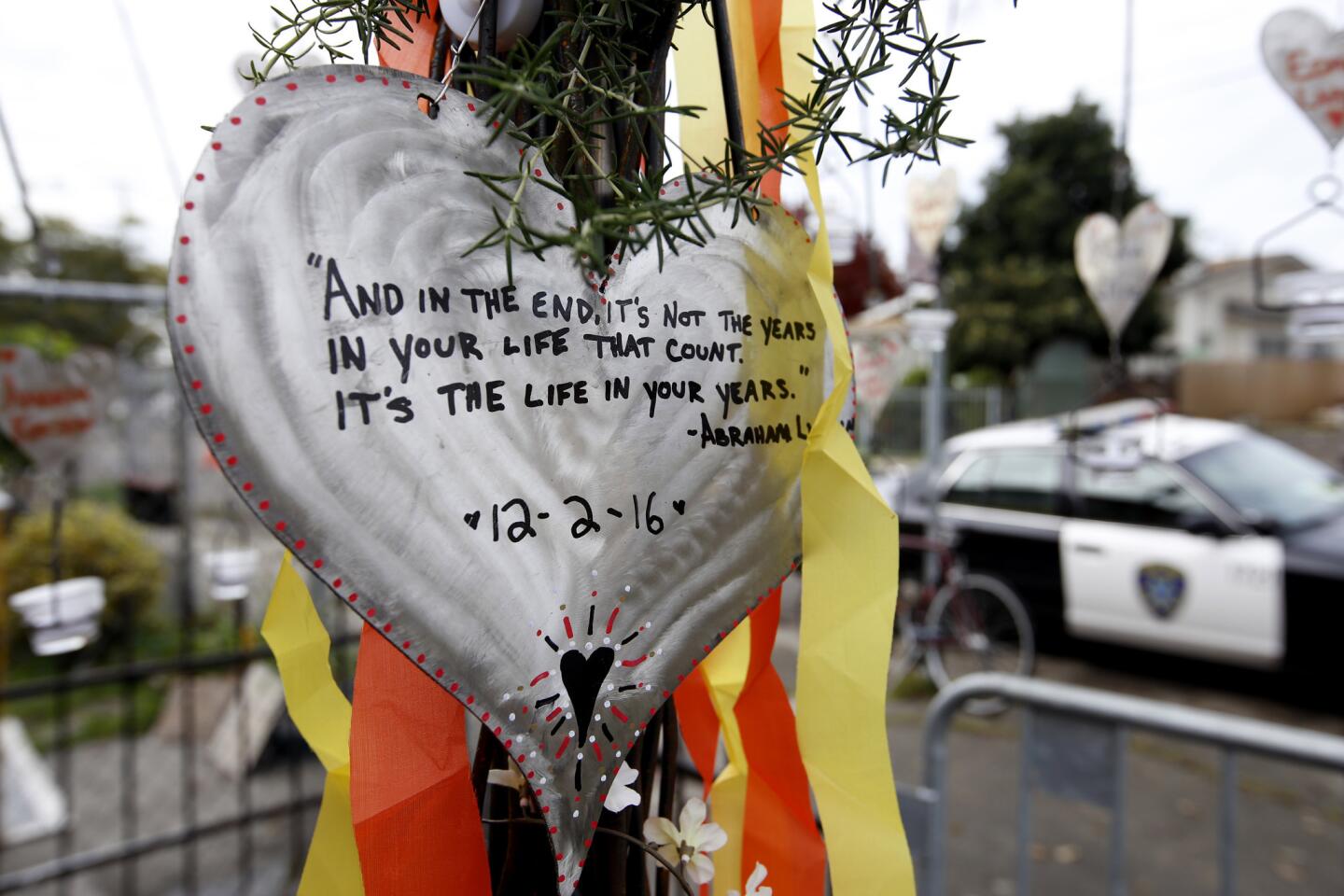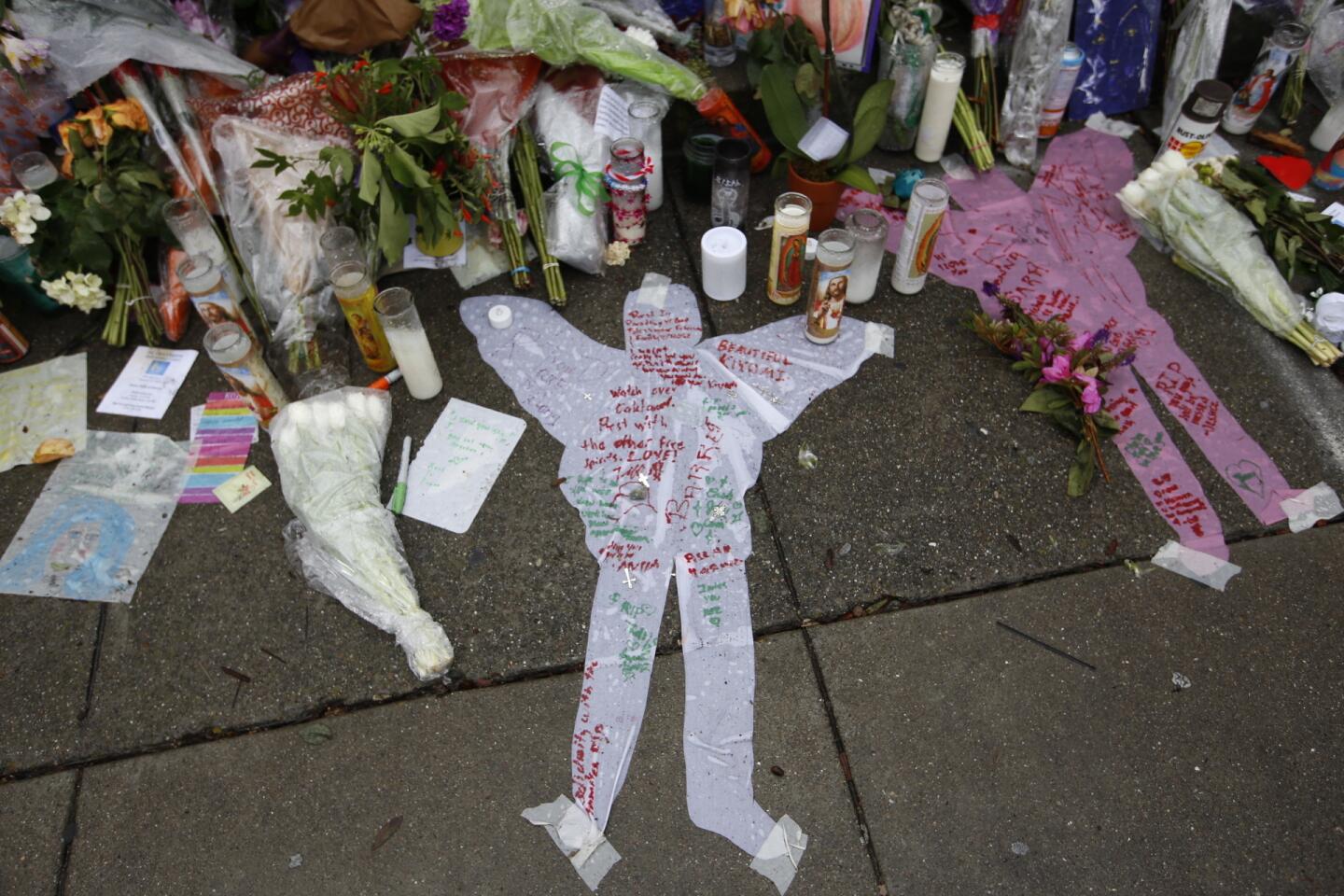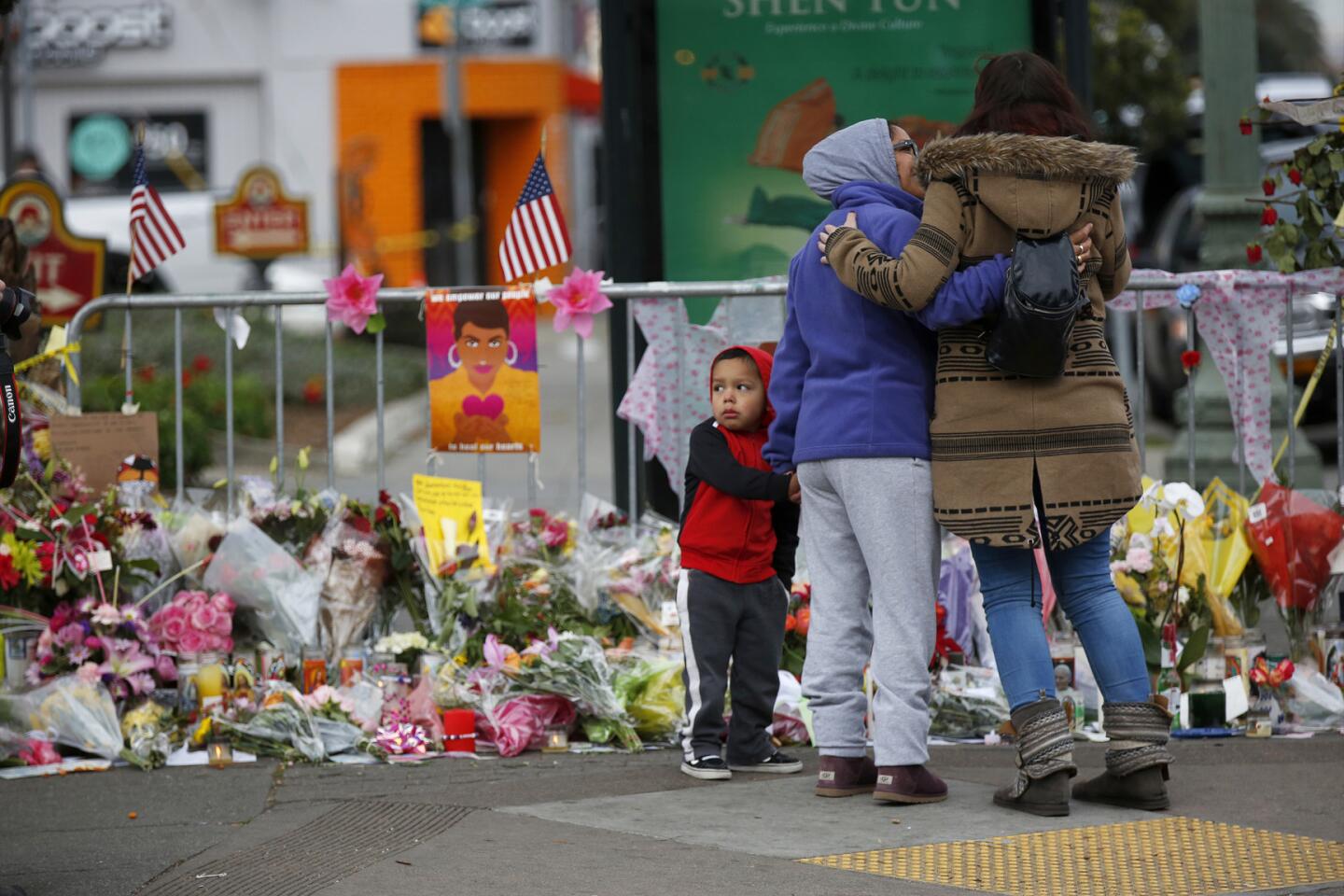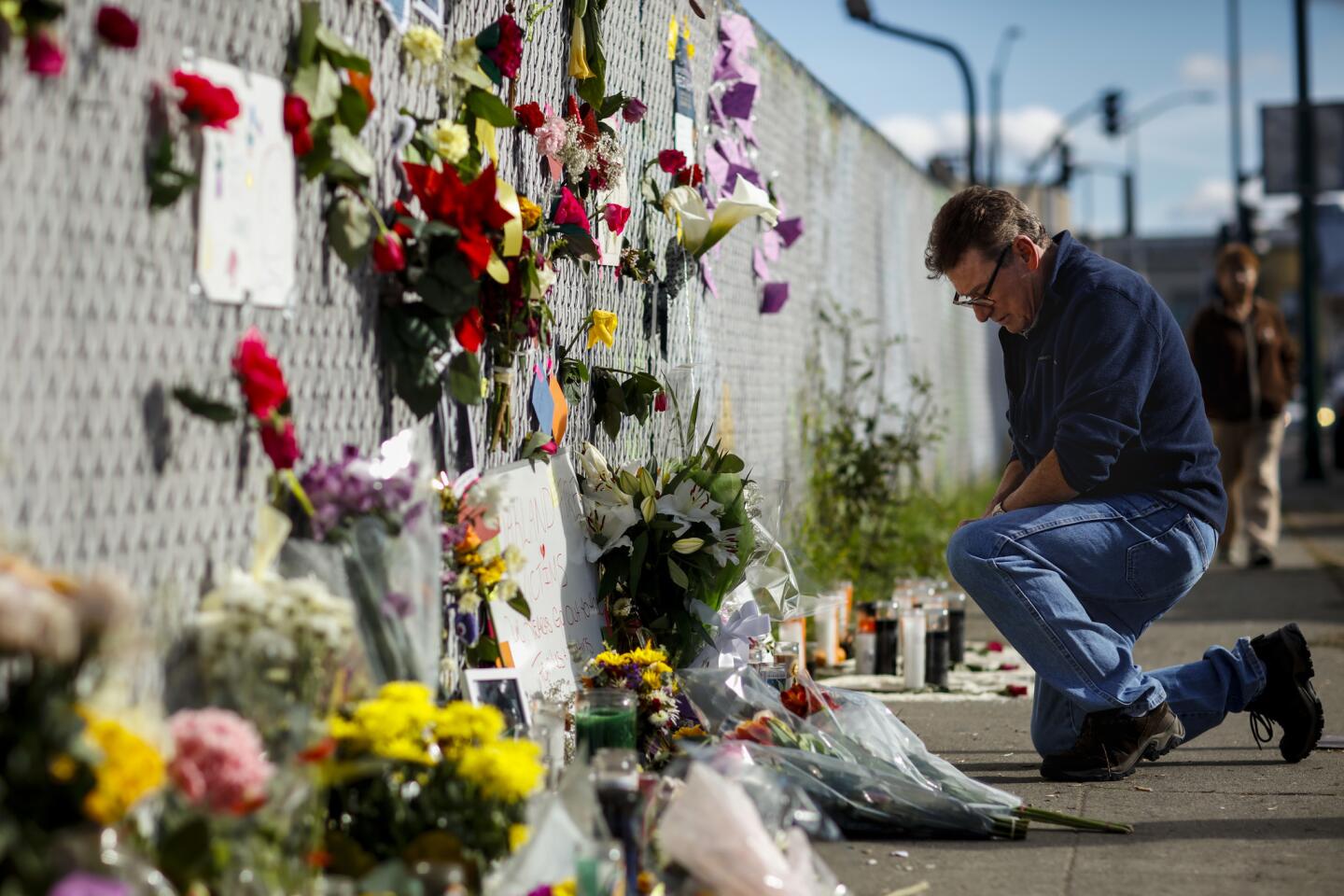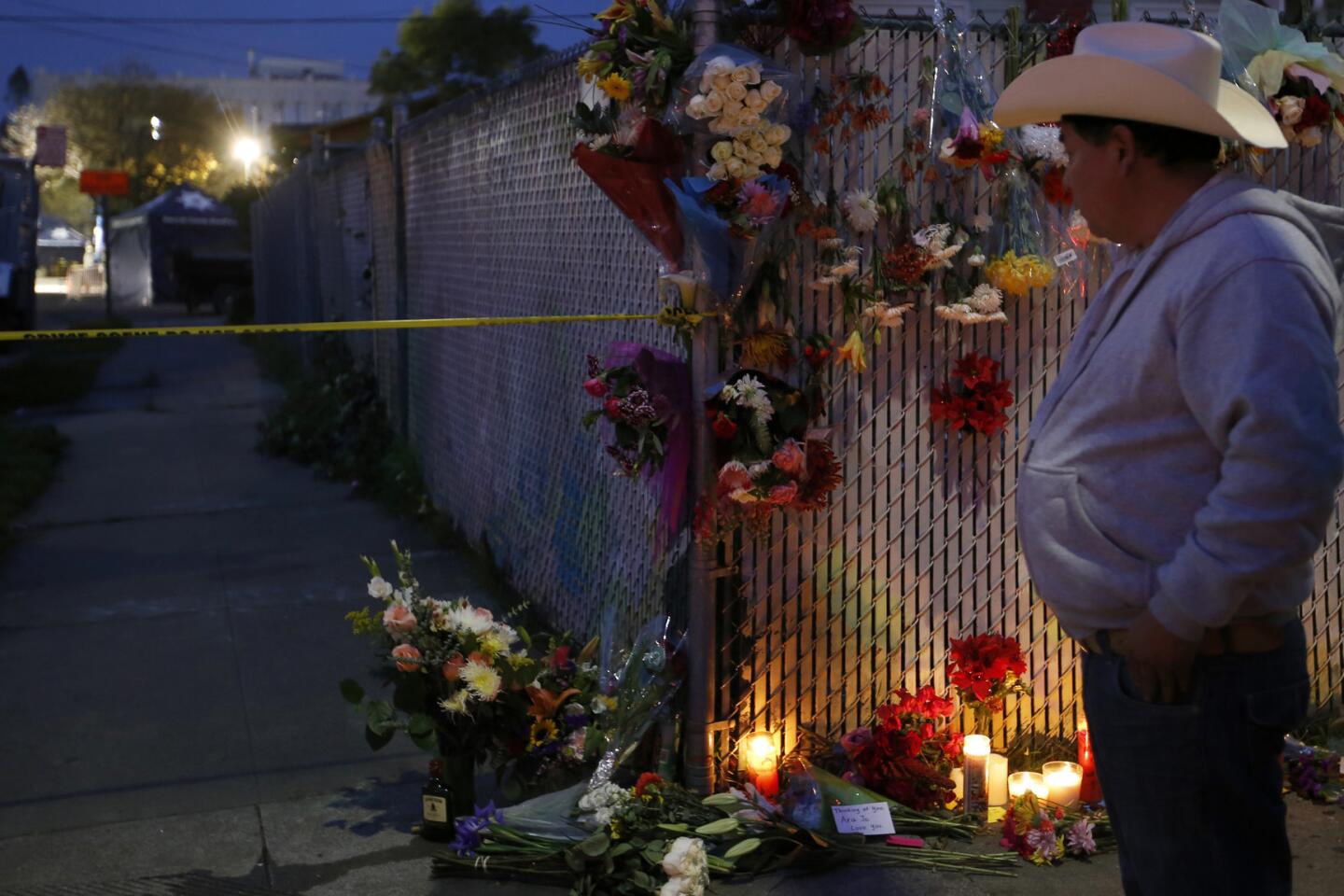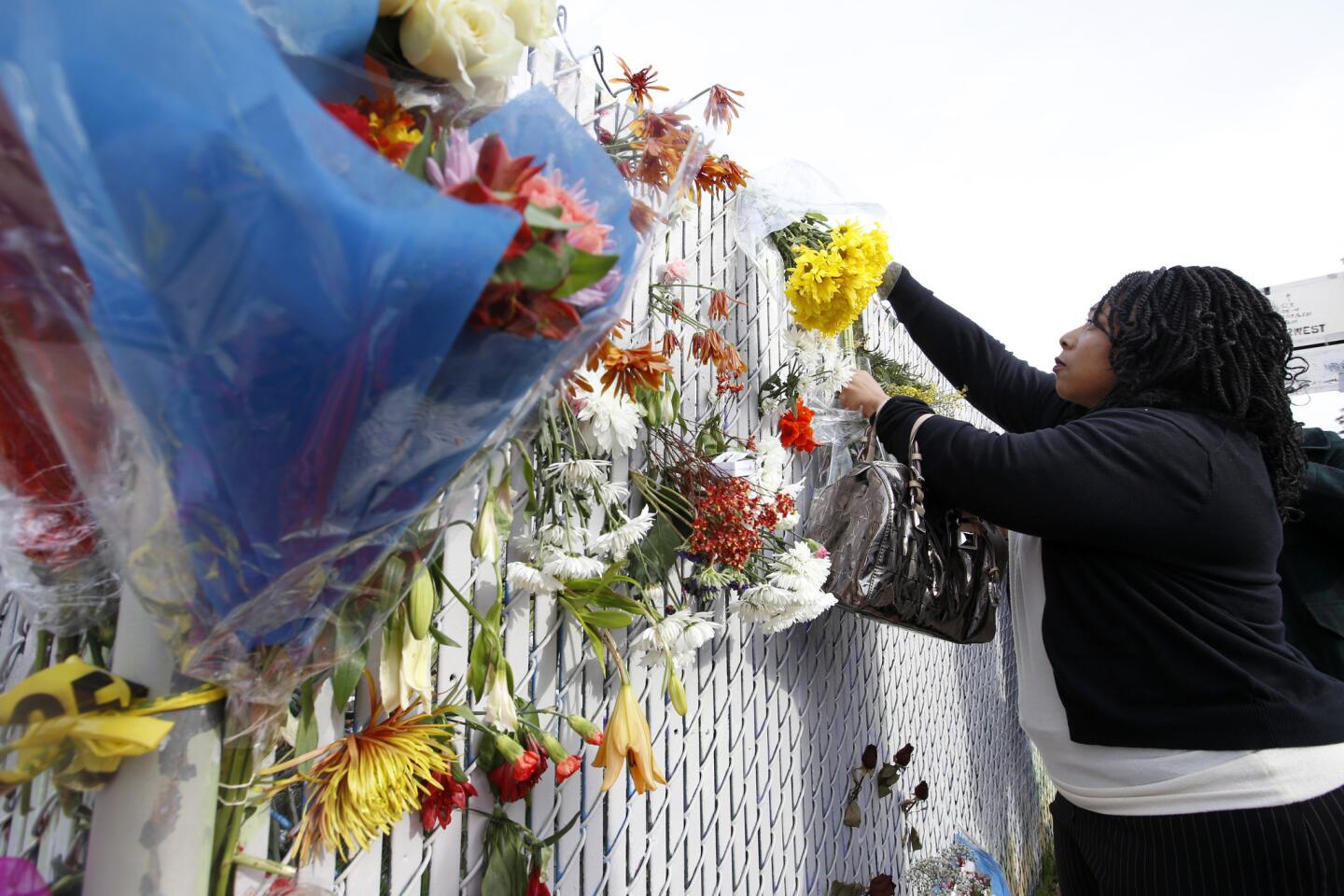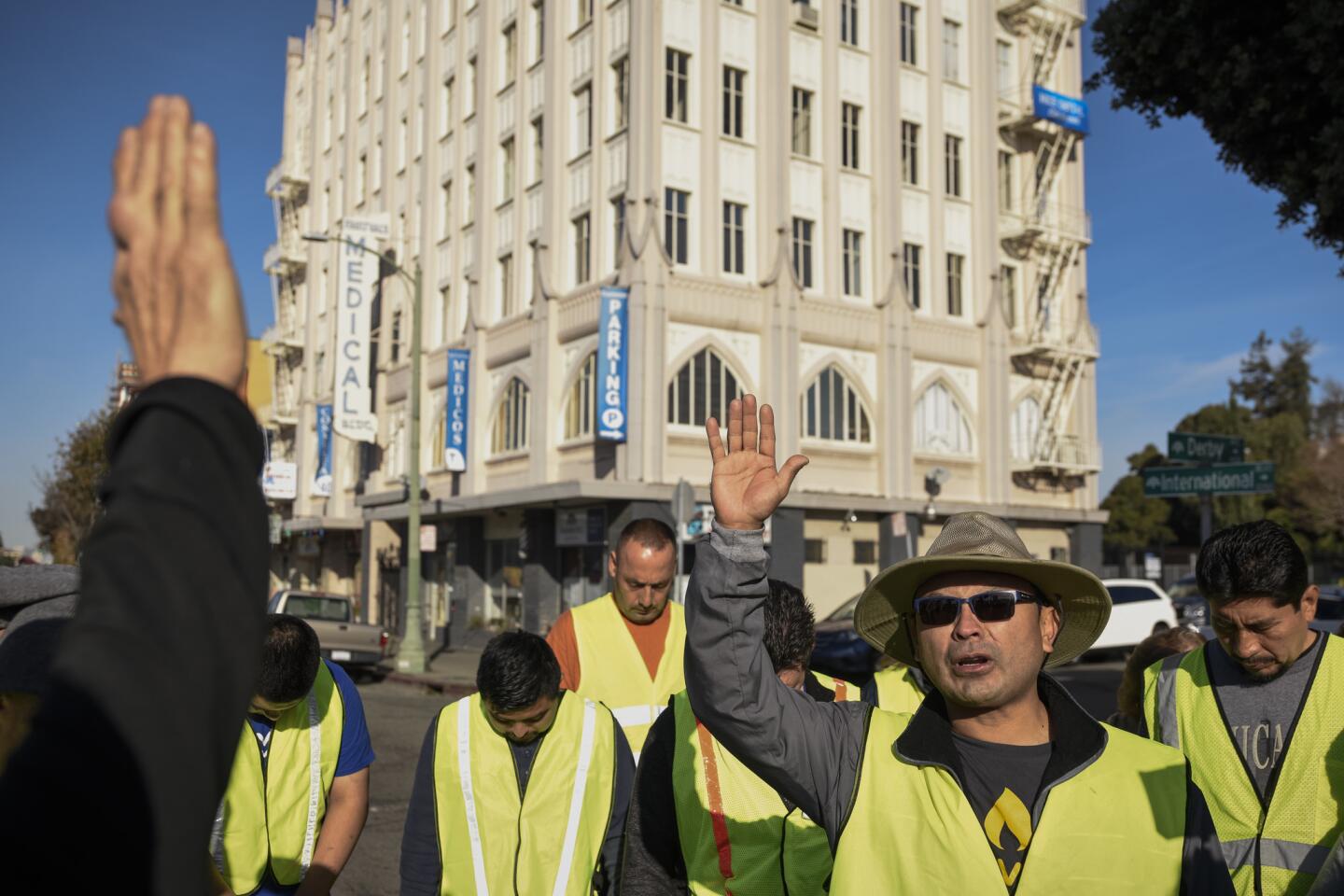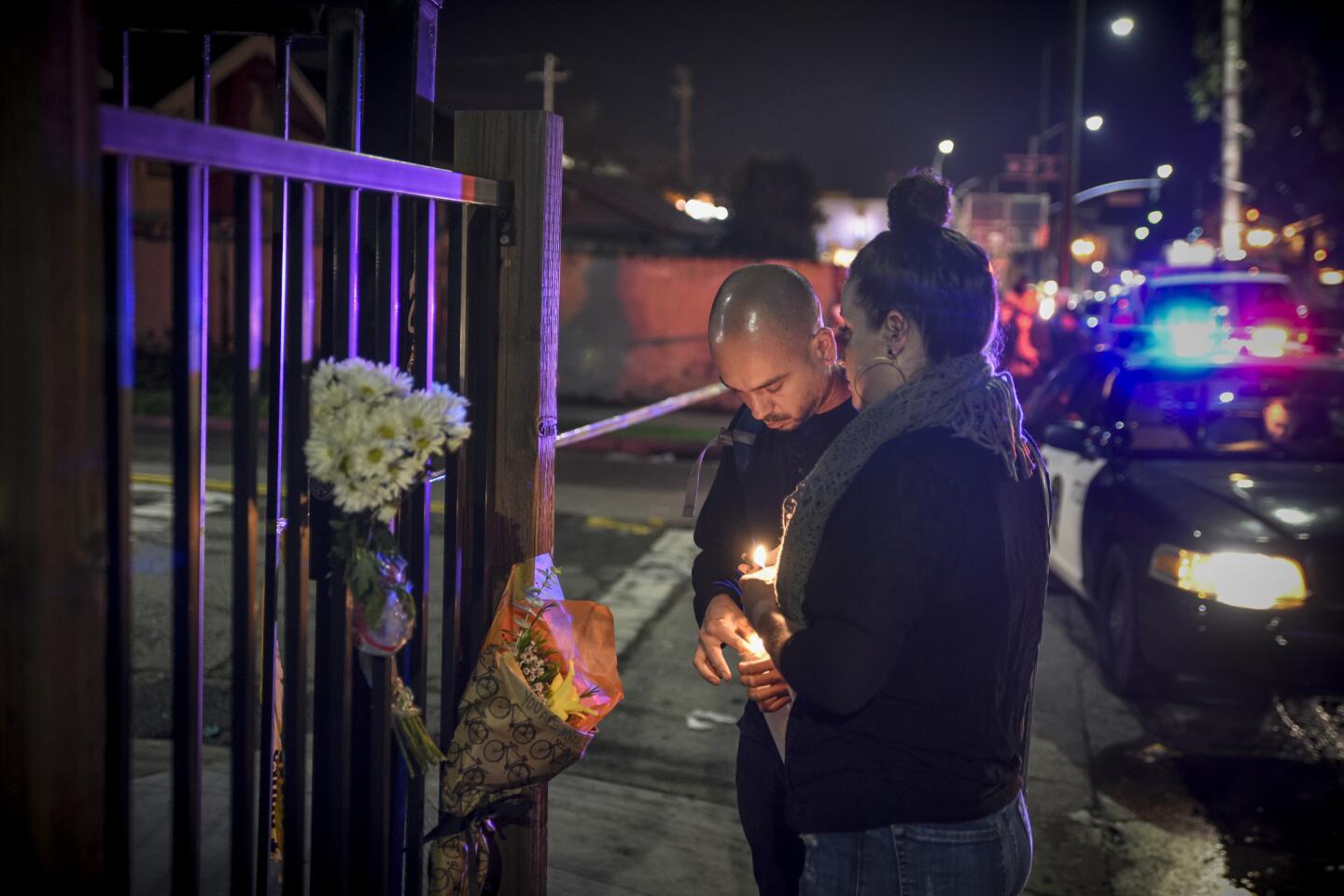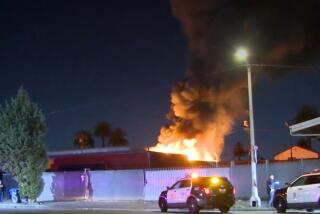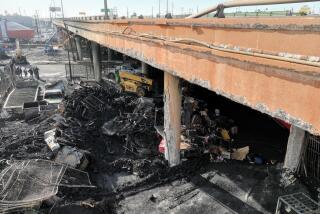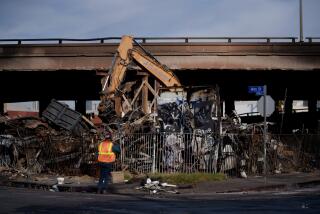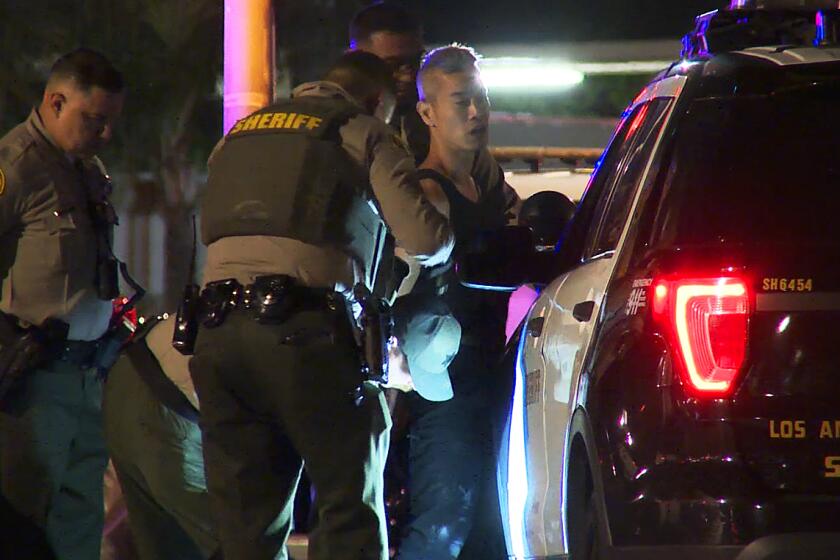Building inspectors had not been inside Oakland warehouse in 30 years, officials say

The city’s planning and building department only goes into buildings when the owner seeks a permit or if officials receive a complaint.
Oakland officials revealed Thursday that no building code enforcement inspector has been inside the warehouse where 36 people died in at least 30 years, raising new questions about government oversight of the property.
The interim director of the city’s planning and building department said the agency only goes into buildings when the owner seeks a permit or if officials receive a complaint.
At the time of the fire, the city was investigating complaints of safety problems at the warehouse. But for reasons that are not entirely clear, an inspector had not yet actually entered the building to examine it.
It remains unclear, however, whether a fire inspector — who works for a separate city agency — had been inside the building. The city has yet to release any fire inspection reports regarding the warehouse.
The Oakland warehouse, where a catastrophic fire broke out during a concert Friday night, was the focus of nearly two dozen building code complaints or other city actions over the past 30 years, documents released Wednesday showed.
At least three of the complaints appeared to assert that structures had been built inside the warehouse without permits or that the property was being used as a residence. Others cited illegal parking and mounds of debris piled up on the sidewalk and in an adjoining vacant lot.
An inspector who visited the warehouse 15 days before the fire to investigate a possible “illegal interior building structure” was unable to get inside.
According to Oakland Mayor Libby Schaaf, the city followed up by sending a request to the warehouse owner to gain entry. Planning and building department reports released Wednesday, however, indicate only that the city sent a violation notice demanding debris outside the building be cleaned up.
Schaaf said the city eventually would release records of all violations and other actions related to the warehouse, documents requested by numerous news outlets under California’s public records laws.
“No one wants to ever see a tragedy like this in their community,” Schaaf told reporters at a news conference outside the charred and gutted warehouse Tuesday evening. “But when one strikes, it is our responsibility to take aggressive and quick action to avoid any future tragedies.”
As part of that effort, the mayor said she planned to form a task force to review and improve enforcement of city building and fire codes.
The Ghost Ship warehouse, owned by Oakland resident Chor N. Ng, was zoned exclusively for commercial use. It housed an artists collective and, according to former residents and those who frequented the building, had unpermitted living quarters inside and hosted numerous concerts and other events.
In October 2014, the city investigated a report of “constructing house/structure without permits” at the warehouse address. During the visit, an inspector found no violation, according to city records.
“On site inspection, structure was removed before inspection. No violations,” the report stated.
According to building department records, a city inspector went to the warehouse on Nov. 17 to investigate another possible illegal interior structure but was unable to gain access the property.
“Complainant needs to provide access, cannot see if there is an illegal building from the sidewalk (property has a chain link fence in front),” the inspector wrote in a report.
During the same visit, the inspector apparently looked into a separate complaint by a neighbor who reported a “ton of garbage piling up on the property.” The complaint alleged that the “main building was remodel[ed] for residential” and said the situation “causes our neighborhood looks very bad and creates health issue.”
According to city records, a violation was verified and a notice was sent to Ng. However, that notice addressed only the debris and construction material piled outside the warehouse.
Schaaf said the city building inspector had followed correct procedures during that visit. In the records made public Wednesday, the city redacted the names of inspectors who had been to the warehouse, as well as the resident who filed a complaint. Officials did not explain why that information was withheld.
Schaaf said Wednesday that the National Fire Protection Association was assisting the city in a review of building and event safety as well as improvements to the building complaint system.
Officials plan to assemble a “fire safety task force,” and Schaaf said experts would examine existing regulations for fire inspections, smoke alarms, carbon monoxide monitors, event permitting and emergency exit requirements.
The city was also examining how city officials can report potentially dangerous living conditions or illegal events.
“I want to be clear we will not scapegoat city employees in the wake of this disaster,” Schaaf said. “Rather, we will provide them the guidance, clarity and support they need and deserve to do their jobs.”
Schaaf also said her office would reconvene the city’s Artist Housing and Workspace Task Force as a way to promote safe, affordable homes and workspaces in the Bay Area city.
Twitter: @philwillon
Click here for a Spanish version of this story
ALSO
Emergency declaration sought in Oakland after deadly warehouse fire
How to help Oakland warehouse survivors and the families of those killed
Oakland fire: How civil and criminal cases might play out
UPDATES:
7 p.m.: This article was updated with additional information.
6:15 p.m.: This article was updated with more information about inspections and more comments from Oakland’s mayor.
This article was originally posted at 12:20 p.m.
More to Read
Start your day right
Sign up for Essential California for news, features and recommendations from the L.A. Times and beyond in your inbox six days a week.
You may occasionally receive promotional content from the Los Angeles Times.
